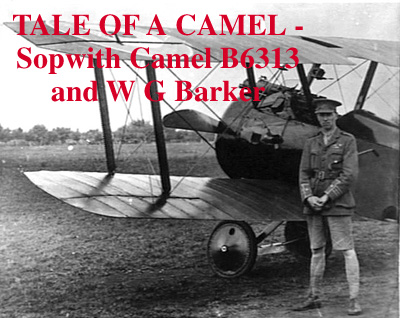This site is best
viewed at 800x600
and 16 bit color.
|
|
|
| Of the 5,734 Sopwith Camels delivered (5,914 ordered), none is more famous than that flown by the Canadian ace, William George Barker - B6313. B6313 was completed by the Sopwith Aviation Co. Ltd of Kingston-on-Thames and delivered to the Aeroplane Acceptance Park at Kenley on 11 September 1917. On 24 September B6313 went to No.28 Sqn RFC based at Yatesbury. No.28 Sqn was getting ready to go to France and on 2 October a new 'C' Flight commander joined the squadron. William George Barker and B6313 were to be together for the next year. On 8 October 1917, No.28 Sqn flew to France, later that same day Barker shot down an Albatros D.V which he didn't claim as he wasn't supposed to cross the lines. The squadron officially began operations on 18 October, and Barker claimed a green Albatros D.III shot down on 20 October. By the end of the month he had scored two more times, when No.28 was notified that it was to be transferred to the Italian front. At this time B6313 carried the No.28 Sqn RFC's marking of a white square on the fuselage and upper wing. Additionally each aircraft carried an identifying number and flight letter. As a flight commander, Barker had streamers attached to the rear interplane strut (possibly red/white/red). Two other touches were the small white spinner and wheel covers. | |
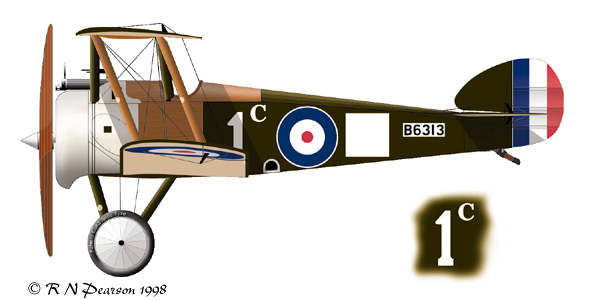 | |
| Sopwith Camel B6313 Captain William George Barker OC, C Flight No.28 Sqn RFC October 1917 | 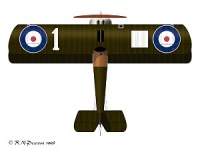 |
| Sometime after arriving in Italy, No.28 Sqn changed their individual flight markings to letters - with B6313 becoming 'N'. Close examination of the photo of the overturned B6313 on 8 March 1918 shows the letter 'N' on the fuselage side beside his left arm. | |
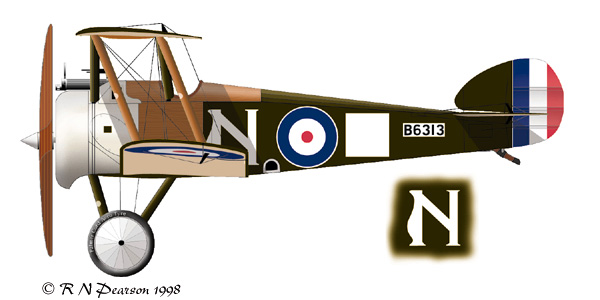 | |
| Sopwith Camel B6313 Captain W G Barker OC, C Flight No.28 Sqn RFC March 1917 | |
| On 10 April 1918, Barker and B6313 went to No.66 Sqn RAF. Unfortunately no photos of B6313 while there have come to light. However it may be assumed that it carried the squadron markings of a vertical stripe forward of the fuselage roundel and a horizontal stripe behind the roundel. Barker was given command of his own squadron on 14 July - however No.139 Sqn flew the Bristol F2b Fighter, not the Sopwith Camel. Barker therefore had B6313 transferred to Z Aircraft Park and then assigned to No.139 Sqn - all on paper of course, as B6313 went with him to No.139 Sqn. While at No.139 Sqn Barker brought his total victories in Italy to 46 before being recalled to England in early October. No.139 Sqn used as it's marking a white/black/white band around the rear fuselage. Barker had this placed on his aircraft and then further expanded it to four white and three black bands, the nose and fin were painted black, a red heart pierced by an arrow was also painted on the fin. One further detail was the 'little red devil' on the right hand Vickers gun. In the past this has been described as 'a tin cut-out', however research by Andy Kemp* shows this to be a three-dimensional 'radiator mascot' (hood ornament). This 'radiator mascot' was also carried by at least three other Italian theatre Camels. | |
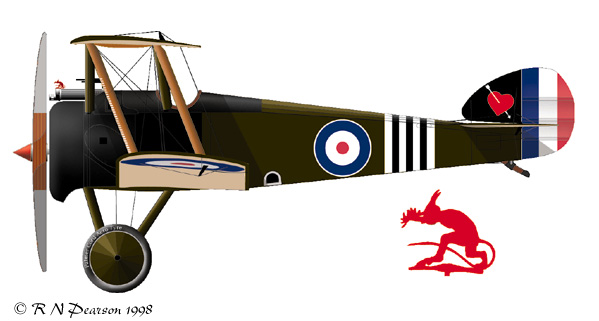 | |
| Sopwith Camel B6313 Major W G Barker OC, No.139 Sqn RAF Summer 1918 | 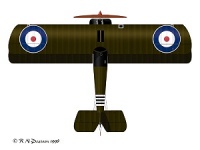 |
| The final appearance of B6313 found it with all the paint removed from the nose panels and the b/w bands expanded to seven and six respectively, Note the heart on the fin is now facing in the opposite direction. Additional cooling slots were cut into the front of the cowl and the upper wing center-section had the fabric removed to improve upwards visibility. | |
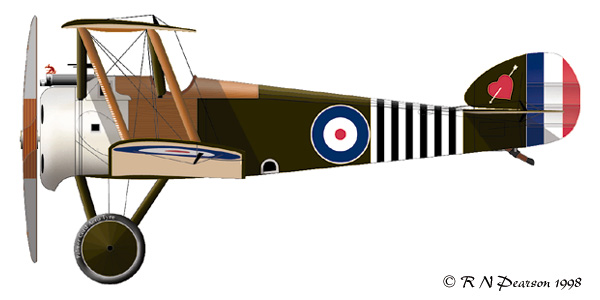 | |
| Sopwith Camel B6313 Major WG Barker OC, No.139 Sqn RAF September 1918
| |
| On 29 September 1918, Barker flew B6313 for the last time, he then took his mascot with him and left Italy - shortly after that he received a letter asking him to return the clock which he had also removed. Such is the gratitude of officialdom. During the year of operational flying B6313 had amassed 404 hours, 10 minutes of flying time, of which Barker put in 379 hours 25 minutes. Barker and his 'Little Red Devil' were to make an appearance in France on Sopwith Snipe E8102, but that is for another time. | |
| * Andy Kemp is working on an article about these 'radiator mascots' for Cross and Cockade International. References: Bowyer, Chaz: Sopwith Camel - King of Combat Sturtivant, Ray & Page, Gordon: The Camel File Shores/ Franks/Guest: Above the Trenches
Further reading: Ralph, Wayne: BARKER, VC Revell, Alex: VICTORIA CROSS - WW1 AIRMEN AND THEIR AIRCRAFT | |

